INTERCEPTING A DIAMETER
If an inscribed angle intercepts a diameter, then it is a right angle.
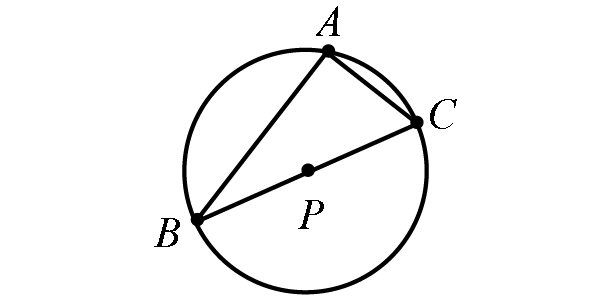
In the diagram shown above,
m∠BAC = 90°
Solved Examples
Example 1 :
In the diagram shown below, find m∠BAC.
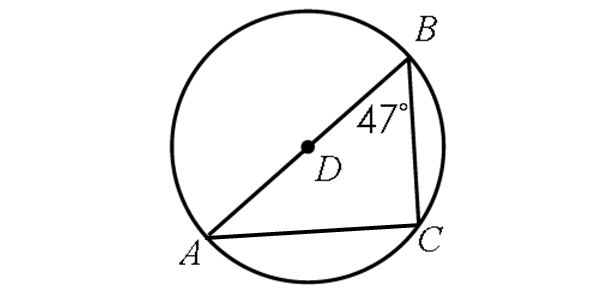
Solution :
In the diagram shown above, the inscribed angle m∠BCA intercepts the diameter AB.
Then,
m∠BCA = 90°
In Δ ABC,
m∠A + m∠B + m∠C = 180°
Substitute m∠B = 47° and m∠C = 90°.
m∠A + 47° + 90° = 180°
m∠A + 137° = 180°
Subtract 137° from each side.
m∠A = 43°
So,
m∠BAC = 43°
Example 2 :
In the diagram shown below, m∠QPR = 30°, find m∠PRQ.
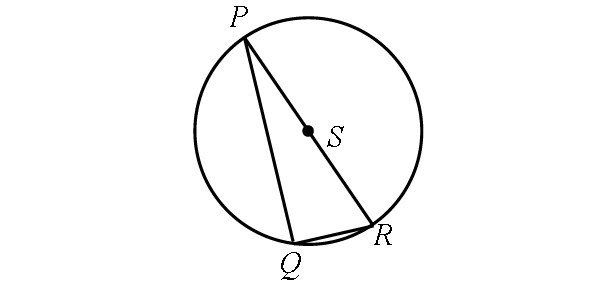
Solution :
In the diagram shown above, the inscribed angle m∠PQR intercepts the diameter PR.
Then,
m∠PQR = 90°
In Δ PQR,
m∠P + m∠Q + m∠R = 180°
Substitute m∠P = 30° and m∠Q = 90°.
30° + 90° + m∠R = 180°
120° + m∠R = 180°
Subtract 120° from each side.
m∠R = 60°
So,
m∠PRQ = 60°
Example 3 :
Solve for x.
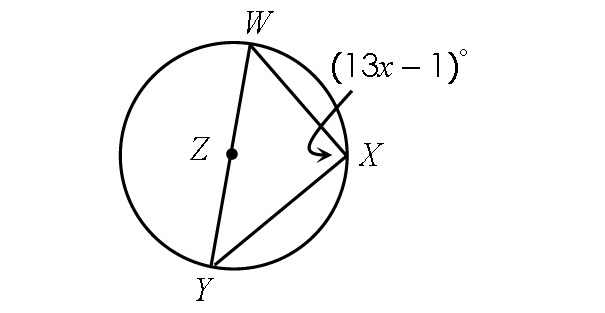
Solution :
In the diagram shown above, the inscribed angle m∠WXY intercepts the diameter WY.
Then,
m∠WXY = 90°
(13x - 1)° = 90°
13x - 1 = 90
Add 1 to each side.
13x = 91
Divide each side 13.
x = 7
Example 4 :
If m∠KJL = (3x + 2)° and m∠KLJ = (7x - 32)°, find m∠arc KL.
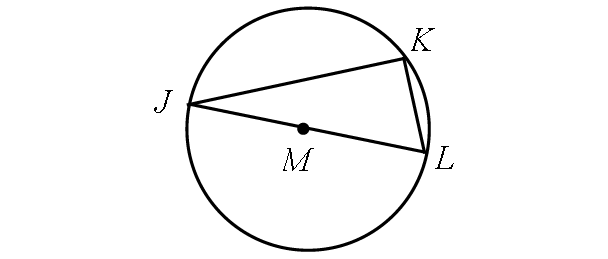
Solution :
In the diagram shown above, the inscribed angle m∠JKL intercepts the diameter JL.
Then,
m∠JKL = 90°
In Δ PQR,
m∠J + m∠K + m∠L = 180°
Substitute.
(3x + 2)° + 90° + (7x - 32)° = 180°
3x + 2 + 90 + 7x - 32 = 180
10x + 60 = 180
Subtract 60 from each side.
10x = 120
Divide each side by 10.
x = 12
Finding m∠KJL :
m∠KJL = (3x + 2)°
Substitute x = 12
m∠KJL = [3(12) + 2]°
m∠KJL = [36 + 2]°
m∠KJL = 38°
By Inscribed Angle Theorem,
m∠arc KL = 2 ⋅ m∠KJL
m∠arc KL = 2 ⋅ 38°
m∠arc KL = 76°
Kindly mail your feedback to v4formath@gmail.com
We always appreciate your feedback.
©All rights reserved. onlinemath4all.com
Recent Articles
-
10 Hard SAT Math Questions (Part - 21)
Sep 27, 25 01:24 PM
10 Hard SAT Math Questions (Part - 21) -
10 Hard SAT Math Questions (Part - 20)
Sep 26, 25 09:05 PM
10 Hard SAT Math Questions (Part - 20) -
Digital SAT Math Problems and Solutions (Part - 248)
Sep 26, 25 05:18 AM
Digital SAT Math Problems and Solutions (Part - 248)
